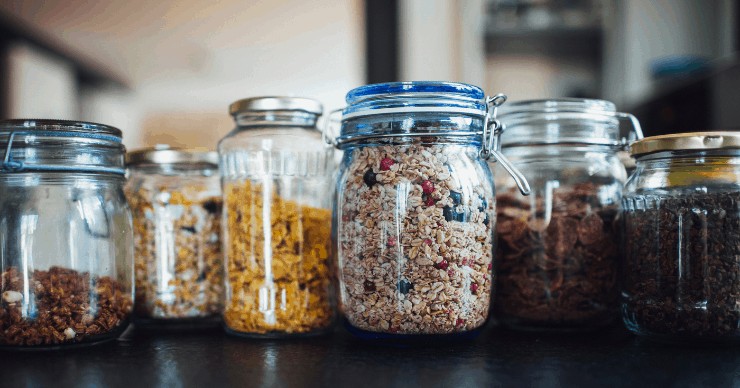Thousands of potentially dangerous substances, such as chemicals, germs, mold, and parasites, can enter food and cause serious sickness or even death.
You and your family cannot afford to take this risk. That’s why you should learn more about safe food handling methods to ensure your food supply is ready and safe to eat.
In this article, I will share with you a rundown of my five food safety and preparation rules. I recommend you to follow these if you want to preserve your most valuable commodity for future use.
#1: CLEAN EVERYTHING – FROM YOUR HANDS, UTENSILS, TO YOUR FOOD
Always, and we mean always, thoroughly wash your hands and any surfaces that will come into contact with foods. Before and after each food preparation, use clean utensils and wipe down cutting boards or counters. Use clean water and an antibacterial cleansing agent or soap. Dishwash kitchen sponges to sterilize them. Take no chances with any of this. Your health is at stake.
#2: CHOOSE THE RIGHT AIRTIGHT CONTAINERS
Choose the appropriate airtight containers for storing your food products. The Centers for Disease Control recommends that you store food in clean, food-grade containers that are absolutely free of any residue left behind by other products. This means that you would not store food or water in an empty milk jug since milk remnants would remain even if the container was washed.
#3: LEARN FOOD SEGREGATION
Keep foods separate from one another to avoid cross contamination. This is especially true for goods like dried fruits and vegetables and beef jerky, which have a shorter shelf life than cereals and sauces. If you opt to freeze fresh meats, make sure to separate each type of meat and store in independent freezer bags to avoid any of these meats from touching. In order to save money, never attempt to keep meats that are beginning to show symptoms of age.
#4: AVOID MOISTURE AND SUNSHINE
Store food at proper temperatures and away from excessive moisture and sunshine. For starters, some foods degrade quite quickly if not maintained at the proper temperature. Other foods will simply lose their nutritional content, making it a waste of your time. Moisture causes canned goods to rust and the formation of bacteria, mold, and mildew, which can make food poisonous. Excessive sunshine depletes nutrients in foods and can cause grains to sprout and ferment.
#5: KEEP THEM PEST-PROTECTED
Rule #5: Ensure that food containers are airtight and pest-proof. Vermin such as rats and mice, as well as winged pests like as moths and roaches, seek out dark places to breed and hibernate throughout the winter months. Don’t let your food storage become a safe haven for these harmful insects! Inspect your food on a regular basis for evidence of pests (droppings, gnaw marks), and set a glue trap under food storage shelves. By taking these easy steps, you can easily avoid many of the major food storage hazards.
You might also want to take a few extra precautions to ensure your long-term food storage and survival. We’re not saying you should throw out all of your existing food storage; instead, take a few minutes to learn more about food safety and how to conserve food for the day when you’ll need it.
Remember, the foods you choose for long-term storage and how you handle them are key links in the survival chain.

